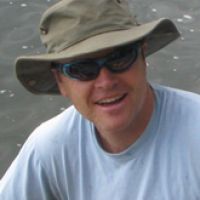Banwart et al., 2012
Sustaining Earth's Critical Zone
Banwart, S., Chorover, J., Sparks, D., White, T. (2012)
Report of the International Critical Zone Observatory Workshop. 8th-11th November, 2011, U. Delaware (USA). National
-
Catalina-Jemez, INVESTIGATOR
-
Christina, INVESTIGATOR
-
National, Shale Hills, INVESTIGATOR, STAFF
Abstract
Earth's Critical Zone (CZ), the thin outer veneer of our planet from the tops of the tree canopy to the bottom of our drinking water aquifers that supports almost all human activity, is experiencing ever-increasing pressure from growth in human population and wealth. Within the next 4 decades, demand for food and fuel is expected to double along with a more than 50% increase in demand for clean water. Understanding, predicting and managing intensification of land use and associated economic services, while mitigating and adapting to rapid climate change, is now one of the most pressing societal challenges of the 21st century. These challenges were addressed in an international workshop of CZ scientists, convened November 9 th - 11 th , 2011 at the University of Delaware, USA. This workshop report outlines the science advances that will be necessary, and documents the links between basic science advances in Earth surface processes and the global sustainability agenda. The overarching hypothesis is that accelerating changes in land use and climate are forcing rapid and profound changes in the continental surface that require an unprecedented intensity and scale of scientific observation and new knowledge to guide intervention. Six priority science questions are identified.
Long-Term Processes and Impacts
- How has the geological evolution of the CZ established ecosystem function and its sustainability?
- How do molecular-scale interactions dictate processes in soils and underlying rock, and influence the development of watersheds and aquifers as functional geophysical units?
- How can theory and data be combined from molecular- to global- scales in order to interpret past transformations of Earth's surface and forecast CZ evolution and its planetary impact?
Short-Term Processes and Impacts
- What controls the resilience, response and recovery of the CZ to perturbations such as climate and land use changes, and how can this be quantified through observations and predicted through mathematical modelling?
- How can sensing and monitoring technology, e/cyber-infrastructure and modelling methods be integrated to enable the simulation of essential terrestrial variables and forecasting for water supplies, food production, biodiversity and other major benefits for humankind?
- How can theory, data and mathematical models from the natural- and social- sciences be integrated to simulate, value, and manage Critical Zone goods and services?
Critical Zone Observatories (CZOs) are research field sites that provide a major international capability to advance the new knowledge that is required for sustainable management of the CZ. Some common features of current CZOs are a wide range of multidisciplinary expertise that is concentrated in order to deliver transformative science advances; a focus on process studies that are hypothesis driven; and a combinationofempiricalobservationatmultiplescaleswithmathematicalmodellingandsimulation. The USA CZOs are developing advances in sensor technology and real-time data acquisition, integrated with data management, across a range of temporal scales. European CZOs are driving forward integration of science advances with social sciences and policy, and development of decision support tools for policy and management intervention.
The role of CZOs is growing in international impact; they are providing scientific focal points to define the major research questions and drawing together the critical mass of disciplines and talent to rapidly deliver solutions to major societal challenges. This development offers enormous potential for research within international networks of CZOs located along global gradients of environmental change; e.g. in land use and climate. Realising this potential requires a step change in the integration of CZO activities and the related science agendas worldwide. The ambition is within 10 years to transform multidisciplinary knowledge and to discoverinterdisciplinarysolutionsthatwillsustainEarth’sCriticalZone. Actionsoverthecoming3yearsto develop this potential include increased international cooperation between funding agencies and stronger international governance, an enhanced directory of current and proposed CZOs and associated field sites, wide international dissemination to a greater array of CZ experts, broad scientific access and contribution to CZO sites and data, recruitment of additional disciplinary expertise and CZOs for research along global gradients, and a prototype web service to dynamically link national geospatial data, numerical models and research data.
Organising Committee, Report Editors
Steven Banwart, Jon Chorover, Donald Sparks, Tim White
Working Group Leaders
Suzanne Anderson, Anthony Aufdenkampe, Stefano Bernasconi, Susan Brantley, Oliver Chadwick, William Dietrich, Chris Duffy, Jerome Gaillardet, Martin Goldhaber, Kirsten Lehnert, Nikolaos Nikolaidis, Vala Ragnarsdottir
Citation
Banwart, S., Chorover, J., Sparks, D., White, T. (2012): Sustaining Earth's Critical Zone. Report of the International Critical Zone Observatory Workshop. 8th-11th November, 2011, U. Delaware (USA)..
 This Paper/Book acknowledges NSF CZO grant support.
This Paper/Book acknowledges NSF CZO grant support.
Associated Files
Sustaining Earth's Critical Zone
(2 MB pdf)
Banwart et al. 2012. Report of the International Critical Zone Observatory Workshop. 8th-11th November, 2011, U. Delaware (USA).
Explore Further



